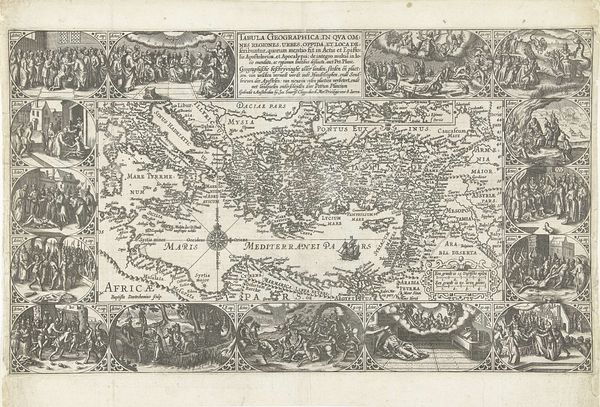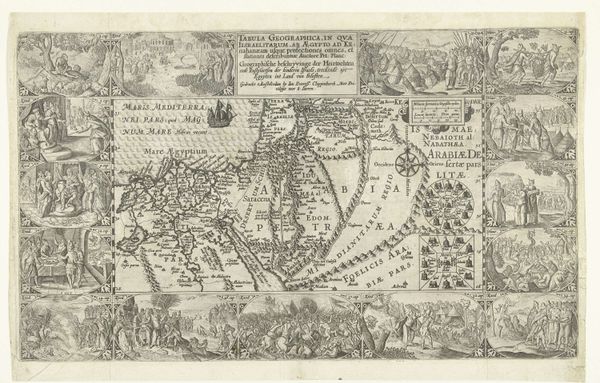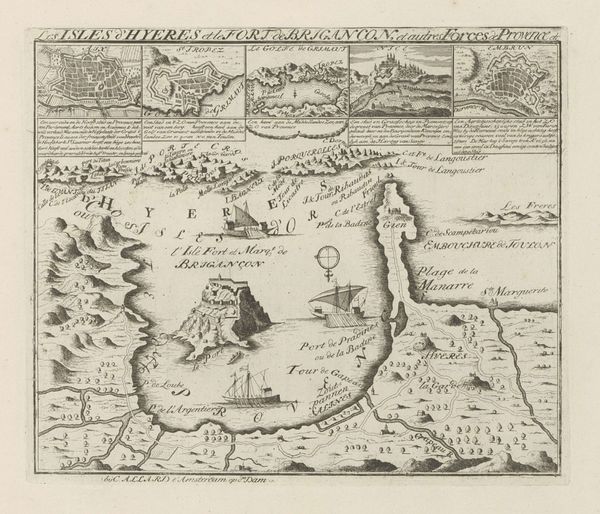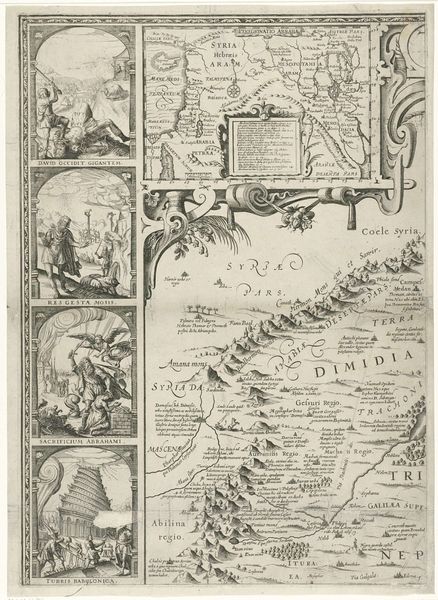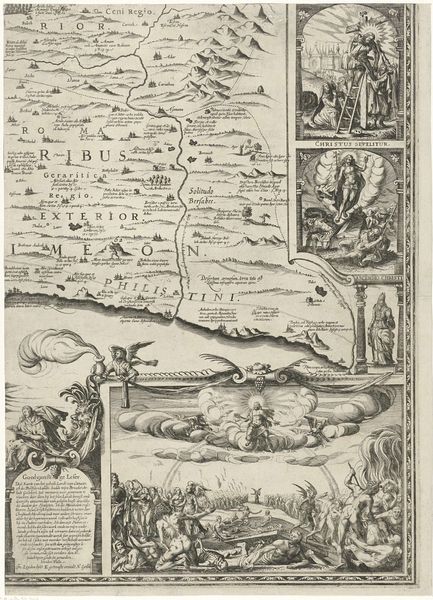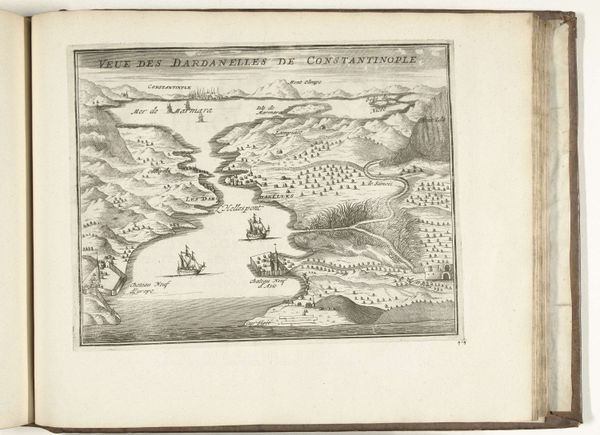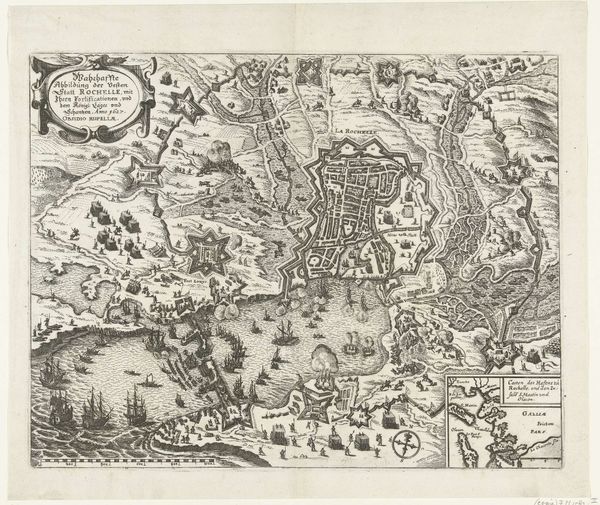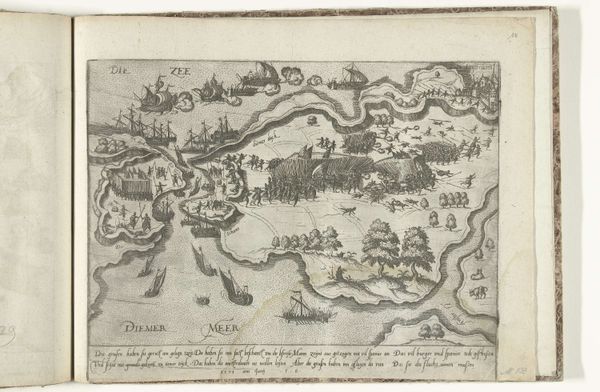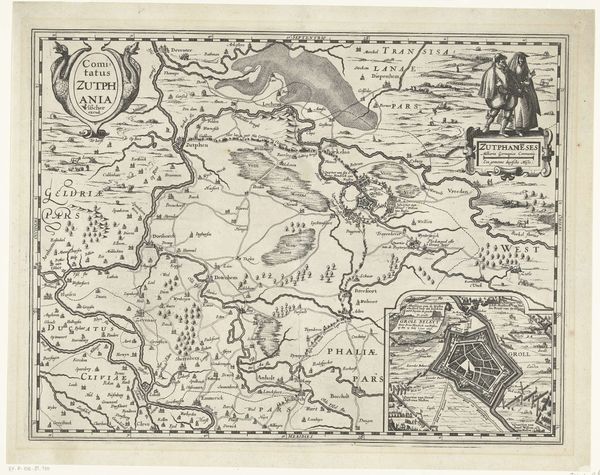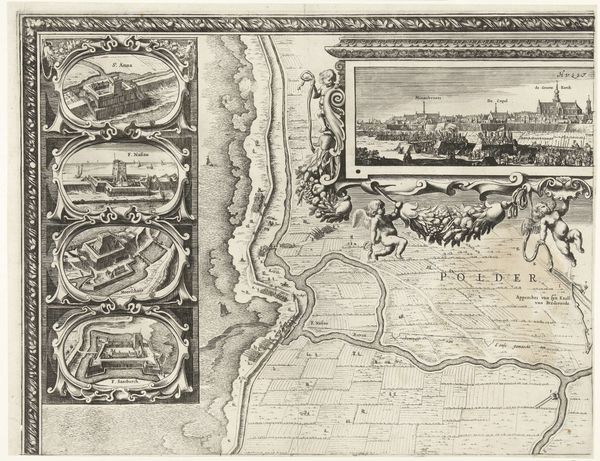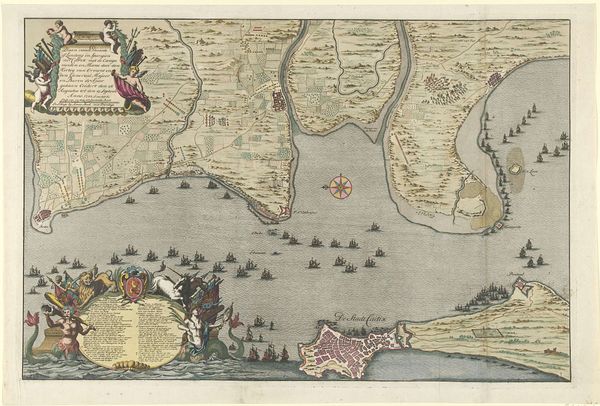
graphic-art, print, etching, engraving
#
graphic-art
#
dutch-golden-age
# print
#
etching
#
history-painting
#
engraving
Dimensions: height 295 mm, width 495 mm
Copyright: Rijks Museum: Open Domain
Curator: At the Rijksmuseum, we're fortunate to have in our collection this detailed map entitled "Kaart van het Heilige Land," or Map of the Holy Land. Created around 1603-1604 by Baptista van Doetechum, it combines the precision of cartography with the narrative power of imagery through etching and engraving. Editor: Wow, my first impression? It's like a history book disguised as a treasure map! The sheer density of information crammed onto this print is astonishing. You've got landscapes, legends... I could get delightfully lost in this thing. Curator: Exactly! The map is more than just geography; it’s a theological and historical statement. Notice the series of vignettes surrounding the central map. These depict key biblical scenes. They tie the physical land to its spiritual significance. Editor: Those little scenes pack a punch. Each one's like a tiny window into another world. I love the detail in them, the expressive faces and dramatic poses. It really enlivens what could have been just a dry, geographical document. It also frames the territory in religious context. Curator: Van Doetechum cleverly uses familiar imagery. These create continuity, connecting his contemporary audience with the historical and biblical past. Consider the visual language of the battles, the serene landscapes... Each carries layers of meaning that resonate even today. Editor: So, it’s about claiming cultural ownership, defining a visual vocabulary of faith through landscape, perhaps? The map anchors the narratives to a real place, solidifying their perceived truth and impact. Like saying, "This isn't just a story; it happened here." Curator: Precisely. By blending meticulous geographical detail with emotionally resonant biblical scenes, van Doetechum created a powerful and enduring image of the Holy Land that continues to inspire reflection on history, faith, and identity. Editor: It feels both scientific and spiritual. You could chart a journey, plan a conquest, or just simply meditate on the human drama of it all. It shows how symbols both root us to the earth, and point to heaven, sometimes both at the same time.
Comments
No comments
Be the first to comment and join the conversation on the ultimate creative platform.
